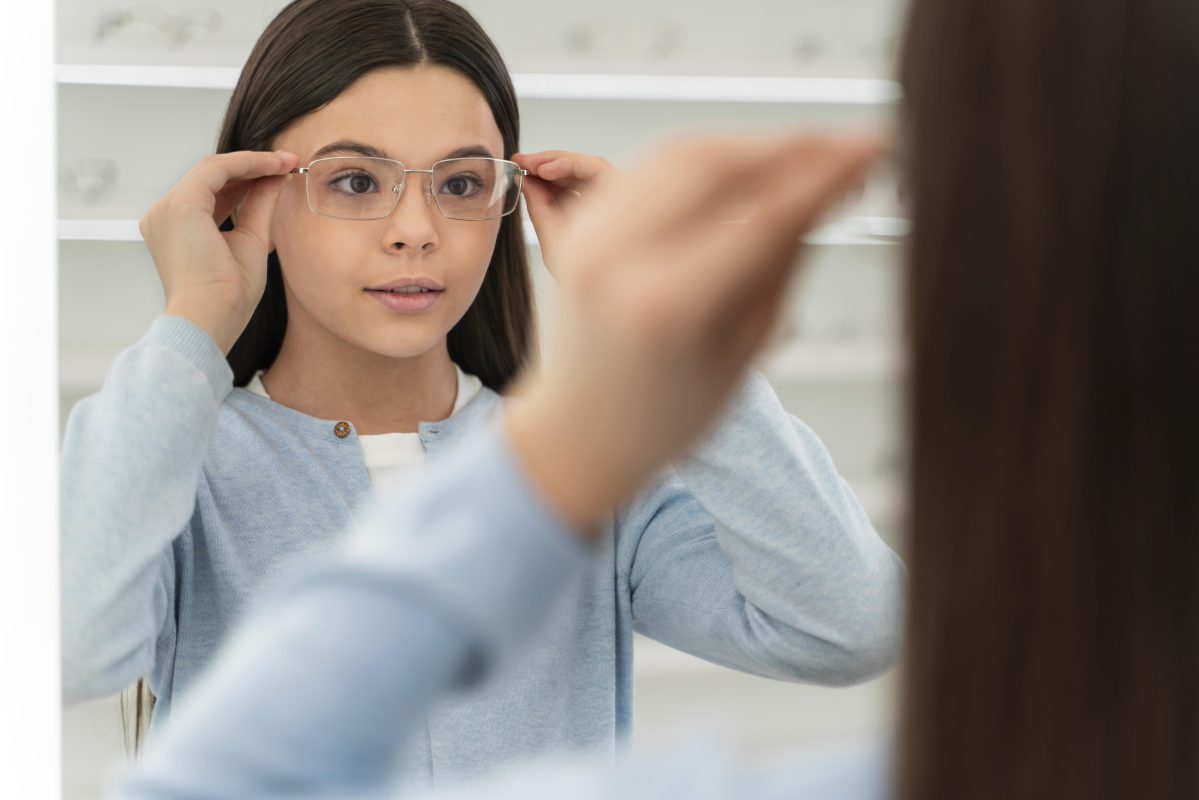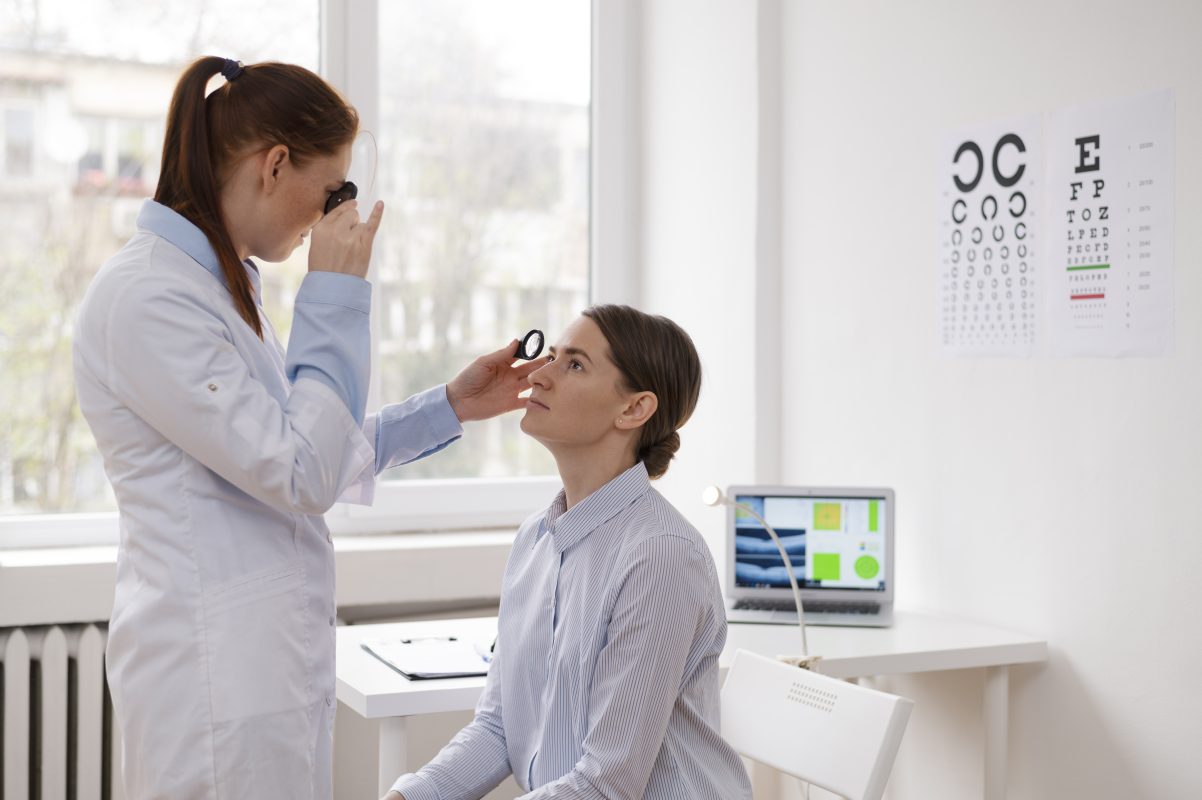In today’s digital age, with technology evolving rapidly, our lives are filled with constant screen time from smartphones, tablets, and computers. While these devices offer immense convenience, they also place significant strain on our eyes. This new reality brings new challenges to maintaining eye health.
Our eyes are essential for experiencing the world and connecting with others, but the rise in screen usage highlights the critical need for good eye care. Prolonged screen time can cause eye fatigue, dryness, blurred vision, and potentially lead to serious eye issues. This is not just a personal issue but a widespread problem.
We often focus on overall health but may overlook the importance of eye care. It’s essential to grasp the basics of maintaining eye health. From adopting proper screen habits to following effective eye care routines, learning how to protect your eyes in our tech-driven world is crucial.
This article will provide insights into modern eye health and stress the importance of eye care. We will explore the impact of digital devices on eye health, offer practical tips for maintaining eye health, and guide you in preserving clear and healthy vision in today’s tech-centric world.
Among the remarkable structures of our body, the eyes are considered one of the most incredible organs, enabling us to see and express emotions. This article will also cover the anatomy and function of the eyes and offer tips on how to safeguard them in today’s digital landscape.
The Wonders of the Eye’s Structure
The human eye is an extraordinary piece of biological engineering, with its complex structure and finely-tuned functions allowing us to experience the world’s beauty. Here’s a closer look at how this remarkable visual organ works:
1. Subtle Adjustments of the Pupil
The pupil, a small black opening at the front of the eye, controls how much light enters. It constricts in bright conditions to limit light and expands in dim light to let more in. This automatic adjustment helps our eyes handle various lighting situations.
2. Lens’s Focus Mechanism
Inside the eye, the lens is a flexible, transparent structure that changes shape to focus on objects at different distances. This ability allows us to see both near and far clearly by quickly adjusting focus.
3. Light-Sensitive Neurons of the Retina
The retina, the eye’s innermost layer, contains light-sensitive cells known as rods and cones. Rods help us see in low light and distinguish shades of gray, while cones enable us to see color in bright light. Together, they let us experience a colorful and detailed world.
4. Brain’s Visual Processing Center
Visual information travels from the retina to the brain’s visual center, located in the occipital lobe. The brain decodes and interprets this information to create the images we see, allowing us to understand and react to our surroundings.
5. Lubrication and Protection by Tears
The eye also includes the lacrimal glands and tear ducts, which secrete tears to keep the surface of the eye moist. Tears serve not only to lubricate but also to protect the eye by resisting bacteria and clearing away foreign particles.
6. External Eye Protection
The eye is protected by the eye socket, eyelids, and eyelashes. The socket shields against impact, while the eyelids and eyelashes prevent foreign particles from entering and causing irritation.
In this marvelous structure, each component plays a crucial role, allowing us to have clear and precise vision. The coordinated work and meticulous adjustment of the eyes showcase the wonders of life. By gaining a deeper understanding of the eye’s structure, we can better appreciate this visual treasure and more effectively care for and protect our precious eyesight.
The Magic Behind How We See
The human eye is an extraordinary organ, working in concert with the brain to deliver a vivid and detailed view of our world. Let’s explore the incredible process of vision and see how our eyes and brain collaborate to create the images we see every day.
1. The Refraction of Light
Vision starts with light bending as it passes through different surfaces and enters our eyes. This process allows us to perceive the rich colors and intricate shapes of our surroundings.
2. Light-Sensitive Retina
Light hits the retina, where it activates two types of cells: cones and rods. Cones are responsible for color vision, while rods work in low-light conditions, helping us see clearly even in the dark.
3. Transmission of Visual Signals
The retina converts light into electrical signals, which travel through the optic nerve to the brain. This quick transfer allows us to react to our environment almost instantaneously.
4. Processing in the Brain
The brain’s visual center, located in the occipital lobe, processes these electrical signals into recognizable images. It interprets various visual elements, such as color and shape, to help us understand what we’re seeing.
5. Creating Depth and Perspective
Our visual system also provides a sense of depth and spatial awareness. By using both eyes, we can perceive distance and size, making the world appear more three-dimensional.
6. Visual Memory Formation
The brain stores visual information, creating memories of colors, shapes, and scenes. This allows us to recall and mentally revisit what we’ve seen.
7. A Complete Visual Experience
From light entry to brain processing, every step in vision is finely tuned to give us a full, detailed view of the world. Understanding this process highlights the complexity and wonder of how we see.
Exploring the magic behind vision deepens our appreciation for this essential sense, showing how it not only lets us see but enriches our experience of life.
Navigating Eye Health in the Digital Age
The digital age has brought about incredible technological advancements, integrating electronic devices into almost every aspect of our lives. While these devices offer convenience and connectivity, they also present new challenges for our eye health. Here’s an overview of how digital technology affects our eyes and what steps we can take to safeguard our vision.
1. Prolonged Screen Exposure
With our eyes constantly fixed on screens for various activities, the strain on our eyes has increased significantly. This extended exposure can cause eye fatigue, dryness, and discomfort. Incorporating regular breaks and following the 20-20-20 rule can help reduce the strain.
2. Impact of Blue Light
The blue light emitted by screens can disrupt our sleep patterns by affecting our circadian rhythms. Excessive exposure, especially at night, can lead to sleep disturbances. To minimize these effects, consider using blue light blocking glasses and reducing screen time before bed.
3. Increased Myopia Incidence
The shift toward more screen-based activities has led to a rise in myopia, particularly among younger generations. To combat this trend, practice good screen habits, maintain an appropriate distance from screens, and spend time outdoors to give your eyes a break.
4. Digital Eye Disorders
Conditions such as dry eye syndrome and computer vision syndrome are becoming more prevalent due to prolonged screen use. These conditions can cause symptoms like eye pain and difficulty focusing. Regular eye check-ups and using lubricating eye drops can help manage these issues.
5. Visual Fatigue from Screen Brightness
High screen brightness and contrast can contribute to visual fatigue and headaches. Adjusting your screen settings, using matte screen protectors, and ensuring proper lighting can help alleviate these symptoms.
By addressing these challenges with proactive strategies, we can better protect our eye health and enjoy the benefits of the digital age without compromising our vision.
Daily Eye Care
Maintaining eye health is crucial, and daily care plays a significant role in keeping our eyes in good condition.
1. Basic Eye Hygiene
Each morning, gently wash your eyes with warm water to remove any debris and discharge that may have accumulated overnight. Also, practice good hygiene by avoiding rubbing your eyes and touching them with your hands to minimize the risk of bacterial infections.
2. Moderate Eye Exercises
Prolonged screen time is a major cause of eye fatigue in modern life. To relieve eye strain, try simple eye exercises such as blinking, looking at distant objects, and rotating your eyes. These actions can effectively alleviate eye fatigue and improve blood circulation around the eyes.
3. Proper Screen Time Management
For those who frequently need to use screens, such as office workers and students, it’s important to manage screen time wisely. Take breaks to look at distant scenery periodically to give your eyes a rest. Additionally, maintaining a regular sleep schedule is essential for overall eye health.
4. Balanced Nutrition
Nutrition is vital for eye health. Foods rich in vitamins A, C, E, and minerals like zinc are beneficial for protecting the retina and slowing down the aging of the eyes. Incorporate dark leafy vegetables, fruits, and nuts into your diet to provide essential nutrients for your eyes.
5. Adequate Sleep
Staying up late not only affects your overall health but also harms your eyes. Sufficient sleep is key for eye recovery and repair, helping to alleviate eye fatigue and dryness.
6. Protecting Your Eyes from External Harm
When engaging in outdoor activities, wearing sunglasses can protect your eyes from UV damage. Additionally, choose appropriate lighting and angles when working or studying to minimize eye strain.
7. Regular Eye Check-ups
Regular eye examinations are necessary to protect your vision. Eye care professionals can detect potential problems early and offer appropriate treatments. Routine check-ups also help in preventing the development of certain eye diseases.
In this era of digital screens and environmental pollution, daily eye care is increasingly important. Amidst the hustle and bustle of daily life, don’t forget to give your eyes the gentle care they need to stay fresh and bright in this busy world. It’s not only for your own comfort and health but also to see the beauty of the world more clearly.
Moving Towards a Brighter Future: Protecting Our Vision in the Digital Age
As technology evolves, our eyes face new challenges. The rise of electronic devices and prolonged screen time test our visual health, making it crucial to focus on protecting our vision.
Our eyes are more than just windows to the world—they impact our work efficiency and overall quality of life. To safeguard our eyesight, we should adopt good habits such as maintaining proper screen distance, adjusting screen brightness, and taking regular breaks.
New issues like blue light exposure from screens require careful attention. Daily eye care practices, including adequate rest, a balanced diet rich in nutrients, and regular eye exams, are essential for preventing eye strain and maintaining long-term health.
It’s also important for society and educational institutions to increase awareness about eye health and promote effective eye care practices. Staying updated with new technologies, such as blue light blocking glasses and anti-fatigue software, can further help in reducing eye strain.
In this age of constant information, protecting our vision is more important than ever. By implementing these proactive measures, we can enjoy the benefits of technology while ensuring our eyes remain healthy and vibrant.





